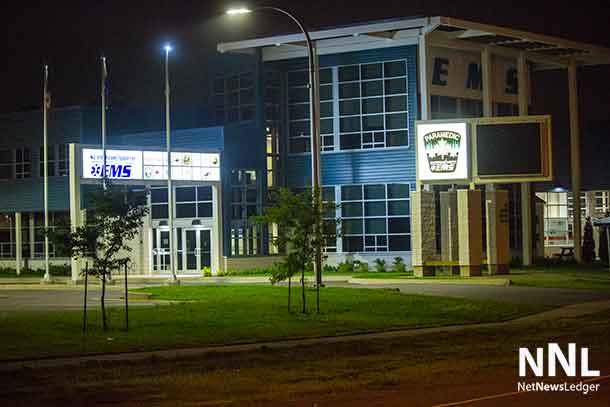In 1971, on the first anniversary of Earth Day, the organization “Keep America Beautiful” ran an advertising campaign featuring an actor by the name of Iron Eyes Cody.
More popularly known as the “Crying Indian” commercial, the ad featured Cody standing in a city, dressed in Plains Indian clothing, watching a person throw a piece of trash from a car window as the announcer pronounced: “People start pollution; people can stop it.”
Cody then, on cue, turned to the camera as a single tear ran down his cheek.
The campaign was a smash hit and reportedly reduced littering by 88 per cent across 38 states, according to one study.
Cody — who by that point had appeared in hundreds of films and TV shows — would go on for decades, performing in more anti-pollution ads, delivering speeches and visiting hundreds of schools across the United States. He was inducted into a Hollywood Walk of Fame in 1983.
Cody claimed he was Cherokee and Cree and, in later life, appeared only in buckskin, braids and beads, and with a feather.
It was all a lie.
After his death, media uncovered that he was a Sicilian Italian named Espera Oscar de Corti who grew up in Louisiana and Texas.
Like it or not, Cody made a contribution posing as an Indian. Beyond his environmental work, Cody entertained audiences (some of them Indigenous), brought attention to Native American issues (even adopting Indigenous children), and influenced an entire generation to see Native Americans as more than just bloodthirsty savages.
He also perpetuated tragic stereotypes, exploited empathy and public guilt, and stole attention, resources and employment away from real-life Indigenous peoples.

It was Iron Eyes Cody who came to my mind when reading about Buffy Sainte-Marie.
The stories are eerily similar.
According to a CBC Fifth Estate investigation released Friday, Sainte-Marie is likely Italian, instead of — as she has claimed for decades — an adopted Cree from Piapot First Nation, “taken from her biological parents” in Saskatchewan.
According to a birth certificate that shares her birthday and name, she was likely born in 1941 in Massachusetts and named Beverley Jean Santamaria.
From the beginning her music career, she first claimed she was “an American Indian girl” in 1961 and then “Algonquin” and “half-Micmac” in 1963 (claiming her “Micmac name is Tsankapasa, or Dark Fawn”).
By the end of 1963 and from 1964 onwards she claimed she was “born of Cree Indian parents” and “adopted” by her Massachusetts family.
That was when she connected with Piapot First Nation.
As Sainte-Marie’s music career exploded and her notoriety increased — in large part because she claimed to be Indigenous — that same Massachusetts family began to challenge her claims privately and publicly. Saint-Marie responded by threatening legal action.
She went on to become, literally, the face of Native America, releasing two dozen albums and appearing alongside musical icons such as Johnny Cash, and made regular appearances on the Tonight Show and other TV programs. She lent her voice to movies, became a visual artist and won numerous awards, including an Oscar, and was named to the Order of Canada.
She also made regular appearances on Sesame Street between 1976 and 1981. One of her biggest fans was a boy named Niigaan who lived in Manitoba and looked forward to when she would proudly talk about being the same culture he was.
She protested wars the American government was participating in and promoted peace. She supported Indigenous musicians and artists, putting her money where her mouth was by founding a non-profit in 1996 to support Native American education.
It was during all of the work she did in helping to build Indigenous communities and bring Indigenous concerns to light that led to her meeting Emile Piapot and Clara Starblanket from Piapot First Nation in the early 1960s.
After meeting them at a powwow in Ontario, the couple offered to traditionally adopt her — resulting, likely, in her pivot to identifying as Cree.
Descendents of the Piapot family continue to recognize the adoption — making a statement on social media this week that, “Buffy is our family. We chose her and she chose us.”
On this important point, Sainte-Marie is admittedly different from Iron Eyes Cody.
But, while Piapot First Nation, the Piapot family and other Indigenous people — including me — chose Sainte-Marie, many now do not, in light of the new information that has been revealed.
I’ve often said Indigenous identity is not just blood. It’s about kinship, relationship and earning your place in a family. Sainte-Marie has done some of that.
But being Indigenous also means being responsible, ethical and not displacing, misrepresenting or harming others — especially in the community you purport to represent.
On that point, many Indigenous peoples have the same complicated feelings about Buffy as we do about Iron Eyes.
Sainte-Marie disputes all of the information uncovered by the CBC.
 Niigaan Sinclair
Niigaan Sinclair
Originally appeared in the Winnipeg Free Press in October 2023. Republished with the permission of the author.
The views, opinions, and positions expressed by all columnists and contributors are the author’s alone. They do not inherently or expressly reflect the views, opinions and/or positions of NetNewsLedger.







